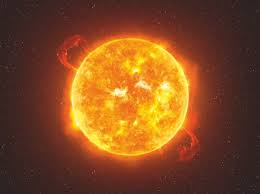Understand Your Own Potentials

Since I ended with the idea of “potentials” yesterday in my recap, I am happy that Prashant continued that thought today through the many ways we might go about “understanding our own potentials”.
“Yoga is a knowledge process” that relies on the “associated culture” of body, mind, and breath in balance. It is an “orchestration” of all these areas that makes yoga the holistic subject that it is. Prashant also uses the term “heuristic subject” to describe yoga as well – a process that has to be taught in order to empower the student to discover or learn something for themselves. “To move a body part in one way or another is not to make that body part intelligent, it is to make YOU intelligent.” So, ALL the ways we use our body, mind, and breath are there to bring us knowledge. This is why we have to get away from ONE dogmatic way of thinking.
Yoga has to become a “bootlace system” the way one part is laced has a total effect on the rest of the lacing. How does the big toe work for the hip or the trunk? How does the big toe work for the breath? How does the mind work on the big toe? How does the breath work for the big toe? All these questions, and more, must be asked. Just placing the big toe and “calling it done” is not the “knowledge process” of yoga.
We tend to learn yoga in the beginning by “emulation”. We see demonstrators and want to be like that person, do like that person. But can we ever really “be” that person? “If we emulate Guruji’s posture is that really ’emulating’ Guruji in totality?” We all have our own “internal indigenous culture” separate from any other person. Only we can know exactly how our body, mind, and breath may work together to bring about our own potentials. Our teacher may tell us to move or press the big toe, but what else happens? What else is effected? How does it feel?
And our progress can’t be measured by “simple, complex, advanced or beginner tags”. It is not about the ticking off of years or the depth of a bend. It is is not about what I have “done”, but what instead have I “accomplished”? In yoga, the purpose brings out the potential and the “usage must bring out the usefulness”.
There are many times I am amused or baffled by the examples that Prashant brings to the table to explain and describe his approaches. They can range from cooking to technology, and today it was astronomy.
To be “Yoga” we cannot let one aspect overpower another – for instance, to approach asana ONLY from a kinesiological view, or ONLY from a psychological view, or ONLY from a pranayamic view, leaving other aspects behind or overshadowed. All of the piece-meal approaches will never lead you to the union that yoga promises. Prashant used the example of the star Betelgeuse, which is larger and more powerful than the sun, but we see it as just another “twinkling little star”. And, though all the stars are shining in the sky at all times, during the day they are not seen. To overpower the breath with the body or the body with the mind, to give more power to the body or the mind over the breath, or whatever aspect you might put above another is always an imbalance of knowledge. We must be wise enough to not allow “class conflict” within ourselves. We must be diligent enough to look for the stars even when the sun is shining! Each aspect of BODY, MIND, and BREATH must hold equal weight to gain wisdom in yoga.
And near the end of class, he reminded us that wisdom is exactly what the practice of yoga strives for. We were given yoga by “sages” (wise people), not gymnasts or psychologists. And aren’t we lucky to have the wisdom of all the Iyengars to shine some light toward our own potentials through yoga.